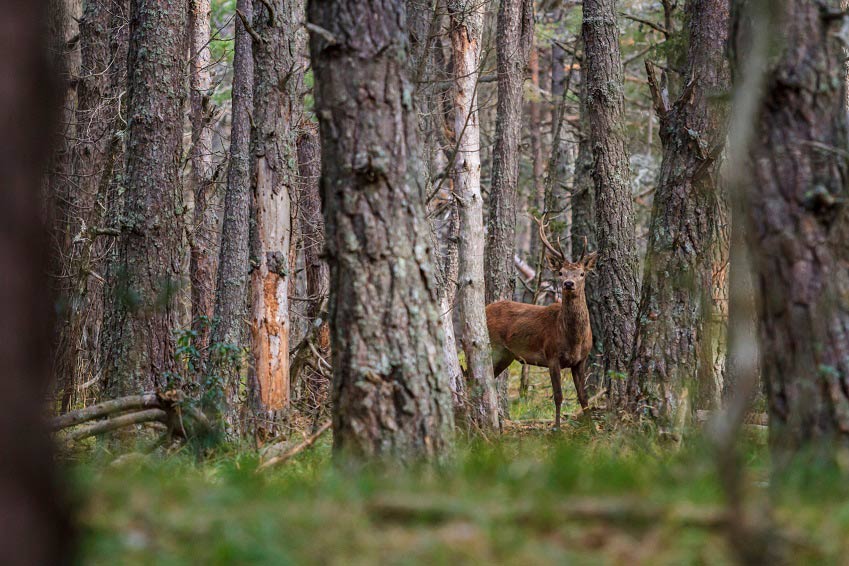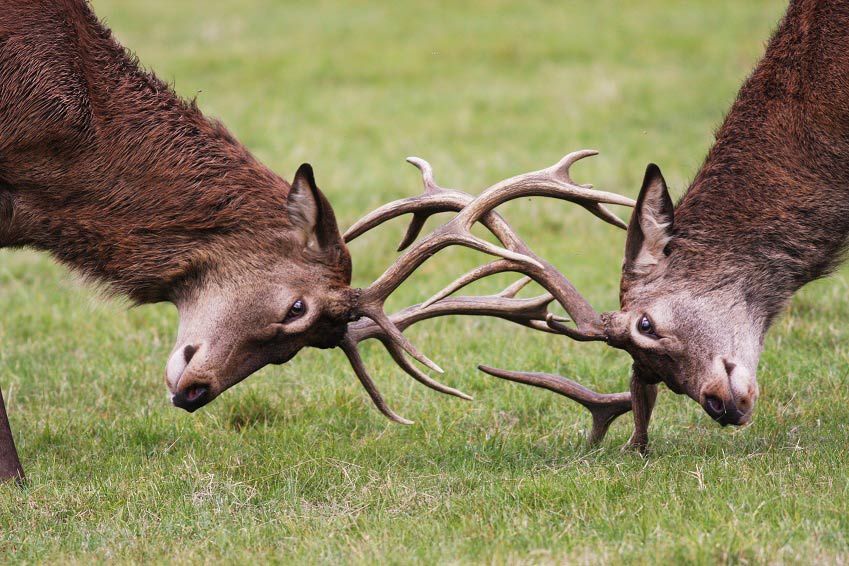Depending on the type, a tree can live for hundreds – even thousands – of years. But the actions of one relatively docile animal can kill a tree long before its time. When a deer rubs bark off a tree with its antlers, the tree is injured, and if the bark is removed from all sides, resulting in an unbroken ring of exposed wood, this is known as “girdling” and can result in a tree being starved to death. Since deer are obviously unaware of what they are doing to the tree, what else could drive them to engage in this destructive act?
Deer in Your Yard
The sight of a deer visiting your property is one that many heartily enjoy. Depending on your nature, this may trigger either memories of mouth-watering venison dishes or heartwarming thoughts of Bambi that make you want to take a photo or attempt to hand feed it. And if it sees you, the odds are good that it will dart away before you can do either. The problem with their visits is that if they arrive when you are not there to scare them away – even unintentionally – they will be free to eat from your vegetable garden and make a mess of your lawn.
But while these actions are very aggravating, the damage is still fixable and your yard may recover from it soon enough. Trees, however, have more at stake from a deer’s attention. In just a few minutes, a deer can damage a tree so severely that it will eventually die. Not only would a dead tree be a blemish to your idyllic garden, it will eventually weaken enough that branches – or the tree itself – could be blown down by strong winds, endangering lives and damaging property.

Antlers and Tree Bark
When summer ends, two things happen that encourage this tree-rubbing behavior in deer.
- A velvet covering that forms on the antlers over the warmer seasons dries out and must be rubbed off
- Bucks ready themselves for the upcoming rut period by marking a territory and announcing their presence
Antler Velvet
During the spring and summer months, a velvet coating forms on a deer’s antlers. According to Dr. Tieraona Low Dog, Fellowship Director for the Academy of Integrated Health and Medicine, this covering contains insulin-like growth factor-1 that benefits the antlers. This substance, recognized for its potential for humans, has been collected and packaged under the name IGF-1. It has been used by athletes for rapid healing and enhanced strength and stamina, and it made the headlines prior to a recent Super Bowl due to its ban by the NFL. It is also being tested for use by doctors in dealing with tendon or cartilage damage, and with children showing stunted growth issues.
Once the velvet has done its job preparing the bucks’ antlers for the rigors they experience in the mate-attraction process ahead, it dries on the antlers and the deer scrape it off by whatever means available to them. This usually involves using the bark of a tree, and most bark is not secure enough to hold up against such an assault. This leads to exposure of the inner layers of the tree.
Breeding Season
The removal of velvet from deer antlers doesn’t take long to accomplish, but that’s when an even more aggressive process begins. Similar to the way other animals will mark their territory, a buck will scent-mark on trees to stake its claim on an area and attract a doe (or several of them) to breed with. This is done by rubbing glands in the forehead against trees, which also results in further bark scraping by the antlers.

It is also believed that the accompanying thrashing against the tree might be practice for the competitive antler battles that are part of the mating selection. These training sessions might also toughen the muscles in the neck for this upcoming performance
It is during these more assertive acts that the tree is in the most danger. If the bark is removed to form a complete circle around the tree, the tree will lose the ability to transport nutrients up from its roots and will slowly die.
Keep Deer Away
Now that you see the seriousness behind visits from these otherwise majestic creatures, take steps to ensure that they do not destroy your property in your absence. Visit the Havahart® page on deer for advice on dealing with their unwanted presence, and check out the products pages for all the types of repellents we offer.
Sign up for our eNewsletter to receive exclusive updates on our products, as well as great resources exploring the types of repellents available and additional tips for keeping your yard deer-free. Then share your own experiences in the comments below or on our Facebook page. We look forward to hearing them!











































